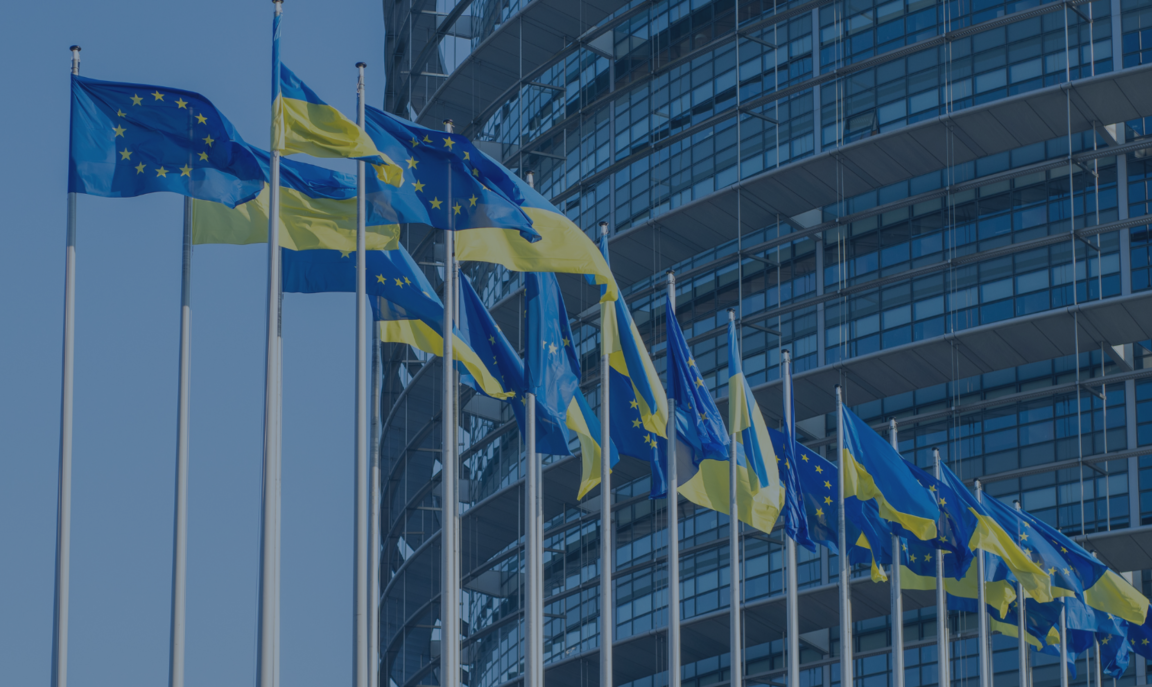You are here

A key victory for Ukraine, but the storm continues to brew
And just like that, the drama is over – or is it?
In a historic decision, a decade after the Maidan uprising and the Revolution of Dignity EU leaders opened the doors to accession to Ukraine (and Moldova). After some delays, the EU also decided to adopt a twelfth package of sanctions including an import ban on diamonds and measures intended to limit the transfer of dual-use technologies to Russia.
The doom and gloom that prevailed in much of the commentariat before the European Council meeting has all of a sudden evaporated, replaced with a a mood of jubilation.
This mood is misplaced, however.
The immediate crisis may be over. Yet the Ukraine story has reached a cliffhanger moment rather than a happy ending – with the saga to be continued at another leaders’ meeting in January.
The symbolic significance of the decision to open accession talks must not be underestimated.
The symbolic significance of the decision to open accession talks must not be underestimated. It will do a lot to lift people‘s spirits in the country, whose citizens are suffering many hardships due to the ongoing war. It is also a testimony to the EU’s continued resolve to counter Russia’s neoimperial project – and to invest in the continent’s peace and prosperity in the current turbulent global geopolitical landscape.
But symbols matter only so much. Ukraine also needs guns and butter – in other words, sustained military and macrofinancial assistance – and it needs them fast.
US assistance to Ukraine has fallen prey to political feuding and bickering in Washington. Intense fighting continues on the battlefields with high rates of attrition while internal political tensions have resurfaced in Kyiv. Moscow, opting for a strategy of aggressive forward defence, is now better positioned to replenish equipment owing to arms deliveries from Iran, North Korea and its own production capacities. This is not a stalemate. Ukraine’s victory remains a distant prospect. But the war has not turned into a frozen conflict either.
The final outcome of the accession process remains uncertain, with multiple veto points ahead – the first as soon as the Council votes on a negotiation framework in the coming months. The €50 billion Ukraine Facility, a macrofinancial instrument to keep the country’s economy afloat, continues to be held hostage to opposition from one Member State. The European Council confirmed the Member States’ future long-term commitment to Ukraine’s security. But the devil is in the detail. It remains unclear how the much-needed continuous and sustainable military support will be provided in practice given that drawing from the common European Peace Facility fund has been blocked for months – and the Council has only just been invited to work further on the fund’s reform.
The EU needs a political strategy for Ukraine and to deal with Russia’s geopolitical revisionism both in the short term and to deter future rounds of ‘Putinic wars‘. To hesitate or even stall now would be the worst strategy of all.
In essence, Putinism is a project to restore Moscow’s hold over Ukraine and other former peripheries of the Soviet empire. But we should make no mistake – seeing Europe in disarray, the Kremlin will not hesitate to exploit every opportunity not just to safeguard its empire but also to extend the tentacles of its influence as far to the west as allowed.
The root cause of the current vacillation over Ukraine is that the period when support was elevated beyond normal politics is over. Power is back, and not just ante portas. Yet any minor gains in the bargaining games over money and political clout – like funds allocated or released to a Member State, or influence in shaping the next Commission – can quickly turn into major losses in security and defence.
What matters is that when European leaders meet again to discuss Ukraine in January, they finish the job.
The assistance to the defence of Ukraine will not be raised ‘above politics‘ again. Politics is about the art of the possible. What matters is that when European leaders meet again to discuss Ukraine in January, they finish the job by taking the necessary urgent decisions based on a clear strategic vision: to ensure the security of all Member States and their societies, Russia’s aggression against Ukraine must fail. Once that outcome has been achieved, Russia has to be contained within its territory. It may take years, but even great powers lose wars against lesser adversaries. The size of Ukraine’s economy is only 10 % of Russia’s – a significant fact in the ongoing war of attrition. Hence, Ukraine’s success depends on continued direct and substantial material aid from the EU, the United States and other partners. The debate on other longer term ‘security commitments’ must translate into concrete actions – including a flow of weapons but also building a solid defence industrial base in Ukraine to ensure that in future it will no longer be dependent on direct military assistance from EU Member States.
In short, trade-offs and compromises – for example, on dividing the macrofinancial assistance disbursed to Ukraine into smaller amounts released over time to make it more acceptable to some home constituencies – are going to be part of the game much more than in the past from now on. What matters is a general sense that the EU knows what it wants, knows how to get there, and keeps on marching.

